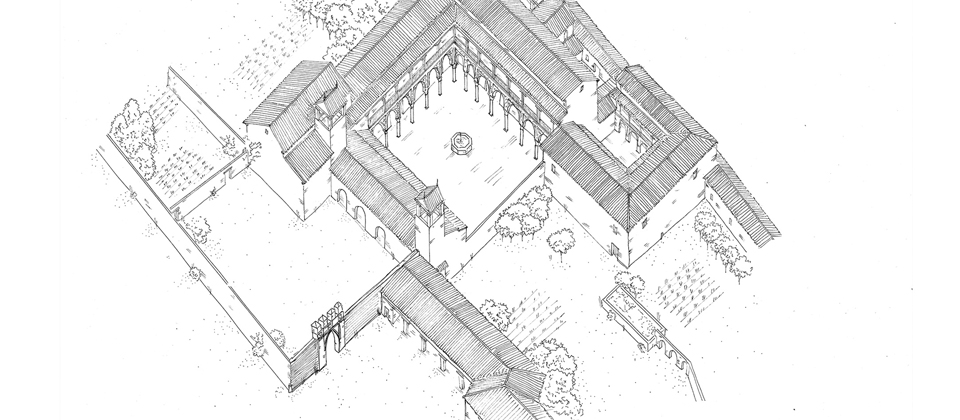Pilate's Cabinet
The qubba of Islamic architecture
The dimensions and the rich decoration of this room allow us to state that it inherits some of the characteristics of the main ceremonial hallaula regia or qubba, of the hispanomuslim architectureThis leads us to believe that it must have played a unique role in the palace's ceremonial life. The qubba of Islamic architecture - which in the territories of the Crown of Castile was adopted as one of the preferred types for the construction of royal and noble reception rooms - is a square-shaped room that forms a a cubic volume, which symbolises the earthcovered by a non-flat roof, which may have taken the form of a dome, vault or trough, and which served as an evocation of the celestial vault. Although this room is covered by a beautiful flat armourIts configuration with ten-loop wheels, with ten-pointed stars at the centre of the composition, is very similar to that used in Mudejar domes, so it is possible that it was intended to serve the same function as a symbolic representation of the celestial sphere.
The double house
The most outstanding feature of the medieval palace, of which this room forms part - and which is an extraordinary singularity in Seville at the time - is that it was organised in the same layout and had, opening onto the courtyard, rooms of identical scale and sumptuousness, both on the upper and lower floors. Thus, this Cabinet of Pilate, has an exact correspondence on the upper floor with a room that must have had the same ceremonial function in the winter palace. and which, because it does not have another floor above it, is covered, this time with a beautiful octagonal trough-shaped frame.
These large halls were the public representative rooms of the palace and at the back, towards Imperial Street, gave access to a more domestic part, almost entirely disappeared with the reforms of the 19th and 20th centuries, made up of smaller rooms arranged around small irregular courtyards that we must imagine inhabited, not only by the family and relatives, but also by an extensive list of servants and slaves.


